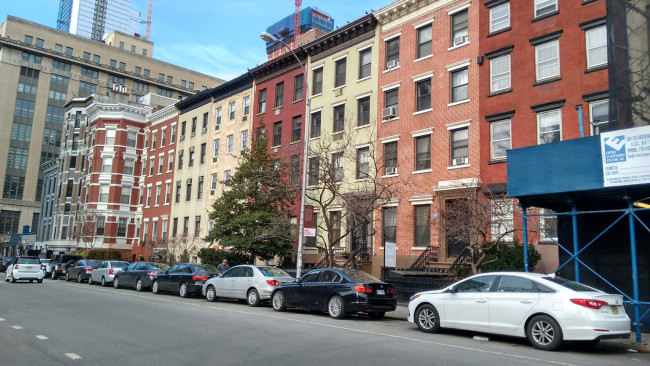6 Underground Railroad homes that are still standing in modern-day NYC
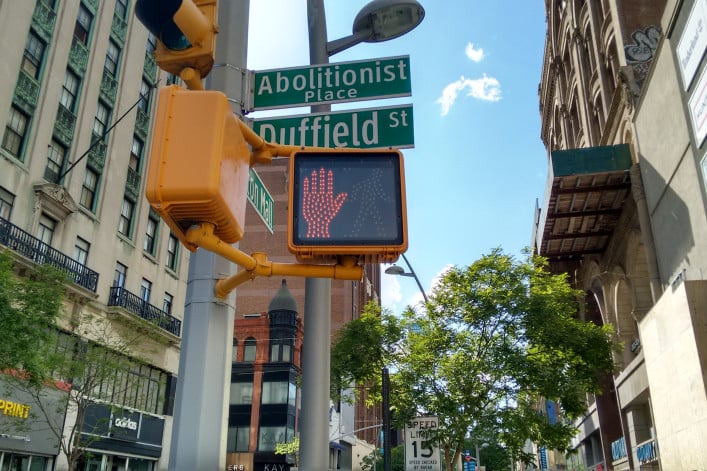
A Downtown Brooklyn street corner honors the neighborhood's history.
Marjorie Cohen
Although New York City was a frequent stopping-off point on the Underground Railroad (the name given to the network of safe houses provided to runaway slaves as they traveled northward in the 19th century), very few of the homes linked to the movement are still standing in 2017. There are many reasons for their disappearance—including this city’s voracious appetite for redevelopment—one major culprit is the absence of specific historical records connected to the movement, the existence of which might have earned these homes landmark status, and protected them from demolition.
Eric Foner, Columbia University historian and author of Gateway to Freedom: The Hidden History of the Underground Railroad, writes that despite its pro-South impulses—trade with the South was central to New York’s economic prosperity—the city also became a “crucial way station in the metropolitan corridor through which fugitive slaves made their way from the upper South through Philadelphia and on to upstate New York, New England and Canada.”
Although slavery was abolished in New York State in 1827, aiding a runaway slave was a violation of the Fugitive Slave Law of 1793, a law made even stricter in 1850. Understandably, clergy and others who participated in the movement seldom kept records of their efforts, which were illegal.
Historian and archaeologist Dr. Cheryl Janifer LaRoche, author of "Free Black Communities and the Underground Railroad: The Geography of Resistance," explained to Brick Underground that “these sites are not going to show up in normal research.” LaRoche is a fierce proponent of the importance of these sites, calling them a “category of places that deserve respect and further attention” and she adds that, up to now, “New York has done an abysmal job of preserving Underground Railroad history.”
Here we list six examples of homes that belonged to some of the most important players in the city’s Underground Railroad movement. However, this list comes with a caveat: as Dr. LaRoche says, “for the most part, the black abolitionists’ homes are not standing” so it is the homes of the white abolitionists that are still here to be seen.
"Even Frederick Douglass’ home in Rochester did not survive," said Dr. LaRoche. "In previous years, the homes of black abolitionists were not recognized as the major Underground Railroad sites that we now know they were. Even when they were known, such as Frederick Douglass’ home in Rochester, they were often not preserved. The Lewis Hayden House on Boston’s Freedom Trail and the John Parker House in Ripley are two notable exceptions."
We are also cheating a bit on our first listing, the home of David Ruggles. Ruggles’s actual home is not still standing but some have posited that the cellar of the new building on site is still the original. Whether or not that is true, the story of New York’s Underground Railroad simply cannot be told without reference to Ruggles. More details below:
MANHATTAN
David Ruggles house, 36 Lispenard Street
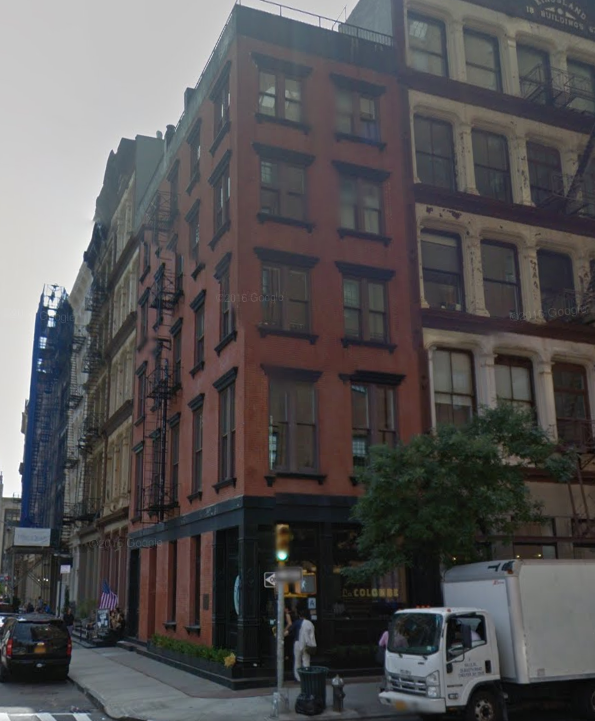
There is a plaque on this building put up by the Landmarks Preservation Commission that identifies the spot where Ruggles, a black man born a free man in Connecticut, lived and worked. (His three-story home was replaced in 1875 with a five story building that is now a condo, and a cafe, La Colombe, stands at the bottom).
Ruggles’s biographer, Graham Russell Gao Hodges, calls him one of the most heroic—and often overlooked—figures of the early abolitionist movement in America—”a forceful, courageous voice for black freedom.”
Ruggles helped Frederick Douglass escape from slavery and mentored Sojourner Truth in the skills of antislavery activism. Hodges credits him with securing liberty for more than 600 former slaves, the LPC plaque ups the number to 1,000.
Ruggles’s brand of “practical activism” included civil disobedience and self defense and was the founding principle of his enormously influential Committee of Vigilance. According to Hodges, it was Ruggles who inspired many upstate New York and New England whites to join him “to form the network that became the Underground Railroad.
Ruggles operated a bookstore and library out of his home, purchased a printing press which he used to publish his own pamphlets and edited "The Mirror of Liberty," the first-ever African-American magazine.
Theodore S. Wright house, 2 White Street (also known as 235 West Broadway)
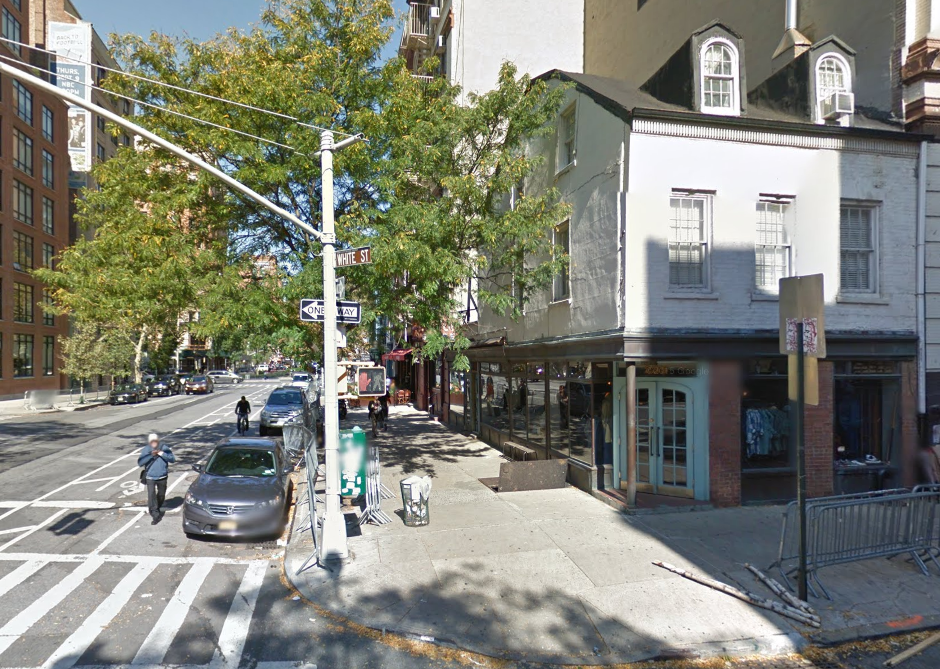
This Tribeca corner building, built in 1809, was once the home of Theodore S. Wright, the first black graduate of the Princeton Theological Seminary, who played a prominent role in the Underground Railroad.
Interestingly enough, though, when the building received official landmark status from the Landmarks Preservation Commission in 1966, no mention of Wright is made in the (brief) designation report. The report cites the building’s importance as “one of those very rare brick and wood houses in New York which still retains its gambrel roof and original dormer windows" and goes on to describe Gideon Tucker, the builder and original owner of the house—an assistant alderman, school commissioner, and New York City Commissioner of Estimates and Assessments.
Wright was born free and educated at the African Free School. He spoke out against slavery as minister of the First Colored Presbyterian Church on Prince Street, as a founding member of the American Anti-Slavery Society and as one-time president of the NY Committee of Vigilance.
At an anti-slavery convention he famously spoke out against racism: “It is an easy thing to ask about the vileness of slavery, but to treat the man of color in all circumstances as a man and brother—that is the test.”
The building is now the home of the men’s clothing boutique, the J. Crew Liquor Store; upstairs is a private apartment.
The Hopper-Gibbons House, 339 West 29th St.
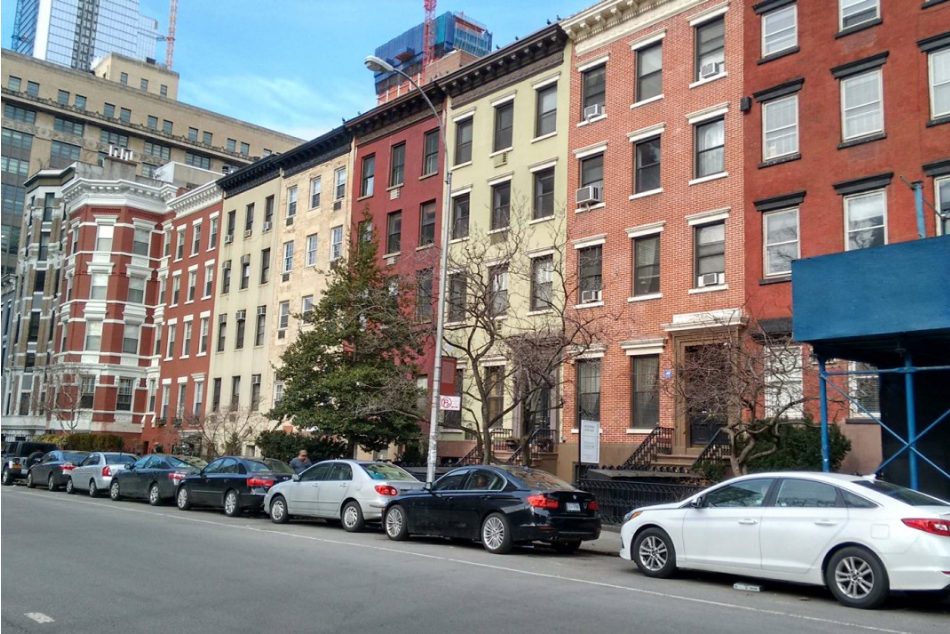
James Sloan Gibbons and his wife, Abby Hopper Gibbons, Quakers and abolitionists, lived here when the block was called Lamartine Place.
Abby was the daughter of Isaac Hopper, who sheltered escaped slaves in his Philadelphia home. Frederick Douglass wrote about the senior Hopper: “He was the first white man I saw when escaping slavery, who led me to doubt the, till then, well established conviction that no white man could possibly possess a disinterested regard for the despised black man….”
Not surprisingly then, the Hopper-Gibbons home became an Underground Railroad site. “The house of Mrs. Gibbons was a great resort of abolitionists and extreme anti-slavery people from all parts of the land, as it was one of the stations of the Underground Railroad by which fugitive slaves found their way from the South to Canada," reads a letter written before the Civil War by neighbor and family friend Joseph Choate (discovered by Fern Luskin, a professor of art and architectural history at LaGuardia Community College).
Because the Hopper-Gibbons family were wealthy supporters of Lincoln’s republican party, and abolitionists, their home became a target of the mob that terrorized the the city during the Draft Riots of July 1863. Abby and James’s daughters, Julia and Lucy, were forced to escape the mob by running over the rooftops of the row houses on their block to safety.
Fast forward and about a decade ago, the rooftop of no. 339 became the focus of huge concern for neighborhood residents interested in preserving the block’s history. Lead by Luskin and her co-chair Julie Finch, a group called the Friends of Hopper-Gibbons Underground Railroad Site began their fight for the removal of a fifth floor addition being built by the present owner of the property, Tony Mamounas (the house was last sold in 2004 for $950,000 according to StreetEasy).
Just weeks ago, the group was able to claim victory. The Landmarks Preservation Commission issued an Emergency Declaration stating that Mamounas must remove the fifth story addition within 60 days. If he does not comply, the DOB will have it removed and bill him for it.
According to Luskin, “This is a victory for history – specifically for remembering both the Abolitionists who endeavored to stop the dreadful institution of slavery and provide slaves with a safe-haven, and the NYC Draft Riots of 1863. [...] the Landmarks Preservation Commission has enabled New Yorkers and tourists from generations to come to visualize how the Gibbons family escaped from the mob that attacked their house during the Draft Riots because of their Abolitionist views.”
Brooklyn
Harriet and Thomas Truesdell house, 227 Duffield St.
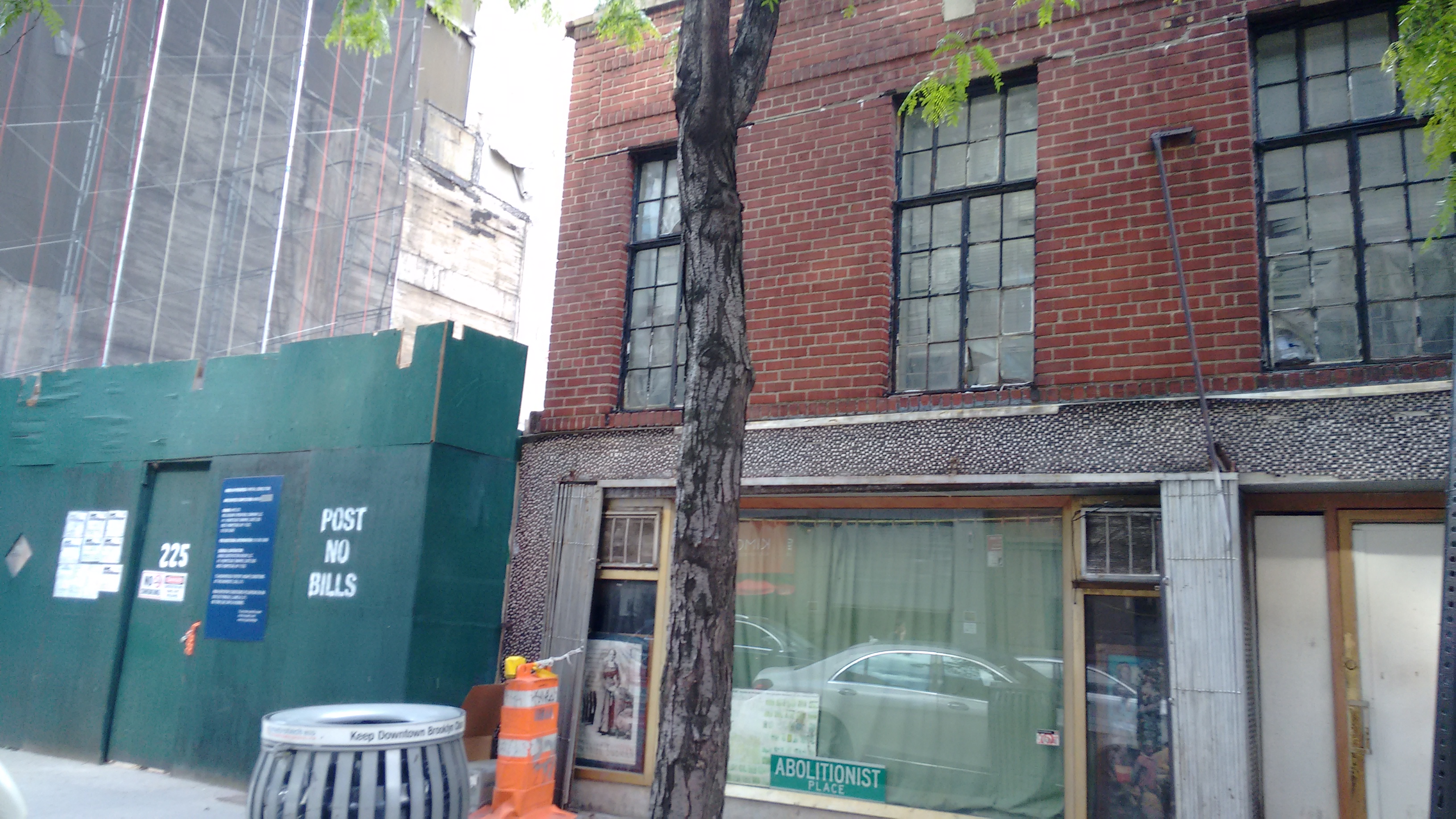
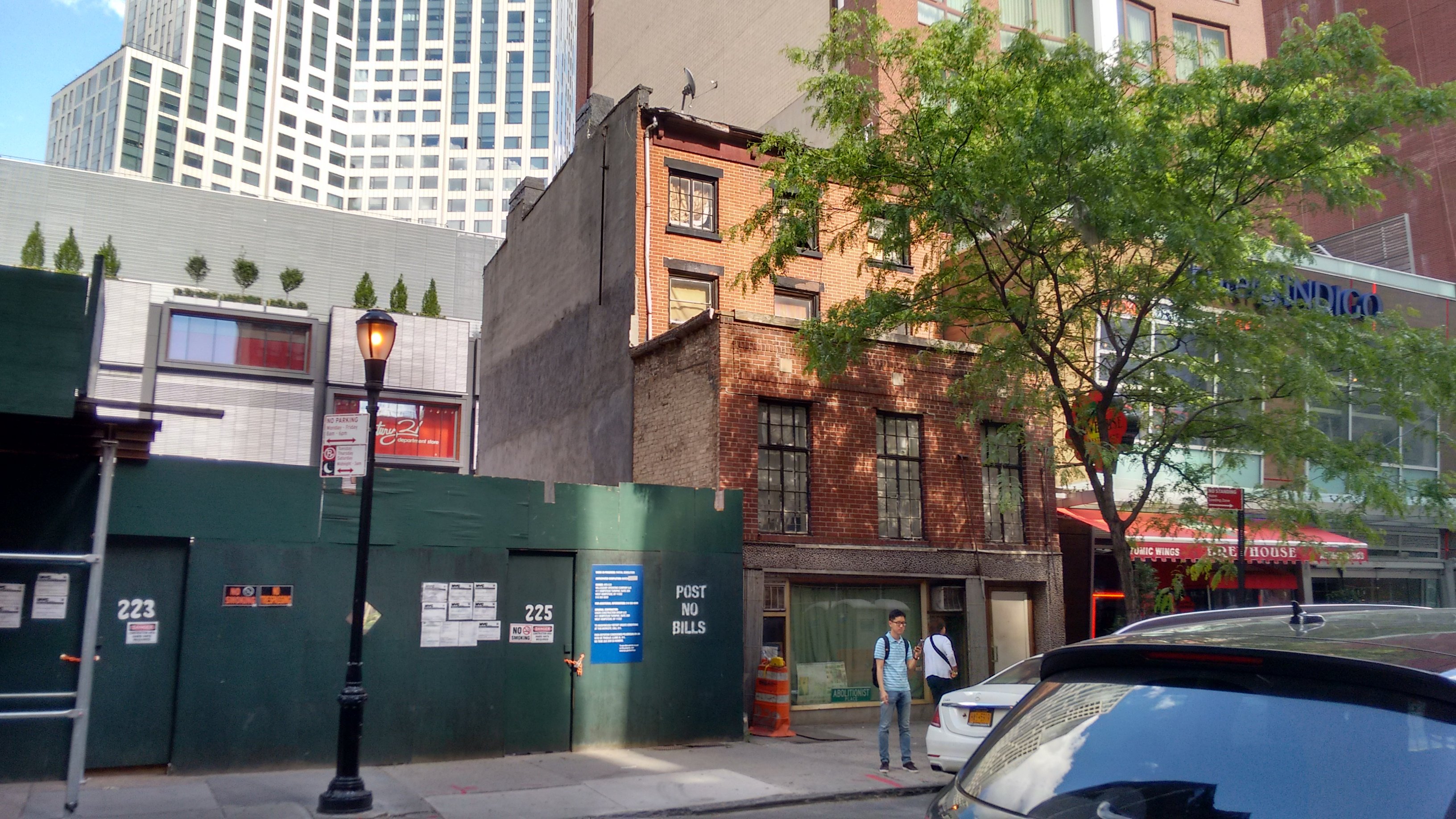
This is a home in Downtown Brooklyn that Dr. LaRoche researched almost 10 years ago, enlisted by neighborhood preservationists in their fight to save it from being demolished in the wake of the Downtown Brooklyn's redevelopment efforts. She told us that the home “is likely a site of the underground railroad” and that the more she learned about the site, the more likely it seemed.
The Truesdells were prominent abolitionists in New England before they moved to Brooklyn in the 1851. Harriet served on the organizing committee of the Anti-Slavery Convention of American Women. William Lloyd Garrison, journalist and founder of the abolitionist publication "The Liberator" was a close friend who stayed in their home on his way to the World’s Anti-Slavery Convention in London in 1840.
Mama Joy Chatel, the owner of no. 227 at the time that Dr. LaRoche did her research, was passionate in her pursuit to turn her home into a museum and heritage center chronicling the history of the Underground Railroad in NYC. Since Chatel’s death in 2014, her daughter Shawne Lee has taken up the cause, aided by a group of community members.
The battle to save the property has been long and hard fought but is likely to be lost soon according to Raul Rothblatt, a spokesperson for the group and friend of the Chatel family. He told us that Mama Joy’s family has put up a valiant fight “but don’t have the resources needed to save it.”
Simeon Bankoff, Executive Director of the Historic Districts Council, told us that the downtown Brooklyn development plan that has probably doomed no. 227 is “ an exorcism of the area’s sense of place—it was an aesthetic and spiritual crime against Brooklyn”.
Ironically, all that may be left of the block soon will be the street sign at the corner of Fulton and Duffield Streets that reads: “Abolitionist Place”.
Lewis Tappan's house, 86 Pierrepont St.
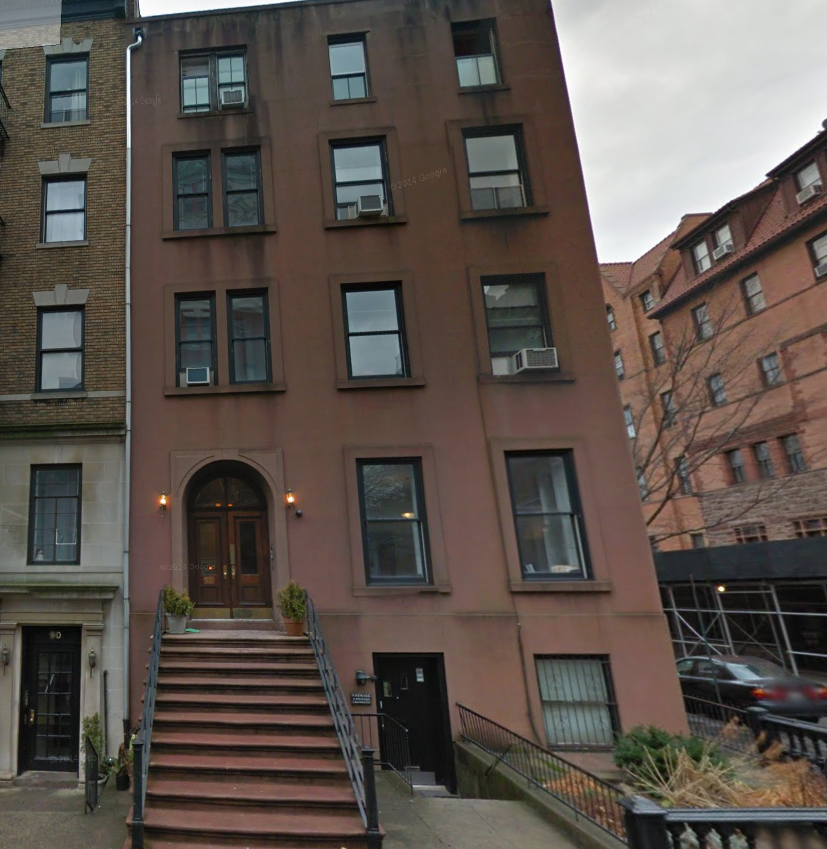
Lewis, along with his brother Arthur, was a well-known New York City abolitionist and Lewis’s first and second wife and his daughter Julianna were active in the women’s division of the abolitionist movement (men and women were kept quite separate in the workings of the movement).
Lewis was the founder of the Chatham Street Chapel in Manhattan where the congregation was mixed white and African-American. In the Anti-Abolition Riots of 1834, both his church and his home were attacked. Shortly afterward, he moved to Brooklyn Heights to this house which, although still standing, has had many alterations. In Brooklyn he attended Plymouth Church during the time that Henry Ward Beecher served as its fiercely anti-slavery minister.
During the Amistad Trial in 1840, Tappan helped recruit John Quincy Adams to defend the 53 illegally purchased African slaves being transported from Cuba aboard schooner Amistad who staged a successful mutiny. Adams argued on behalf of the slaves when the appeal was brought before the U.S. Supreme Court, which eventually determined the Africans to be free men.
It is now a multi-family home. In May 2016 a fourth-floor one bedroom, one-bath apartment rented for $2,800, according to StreetEasy.
Staten Island
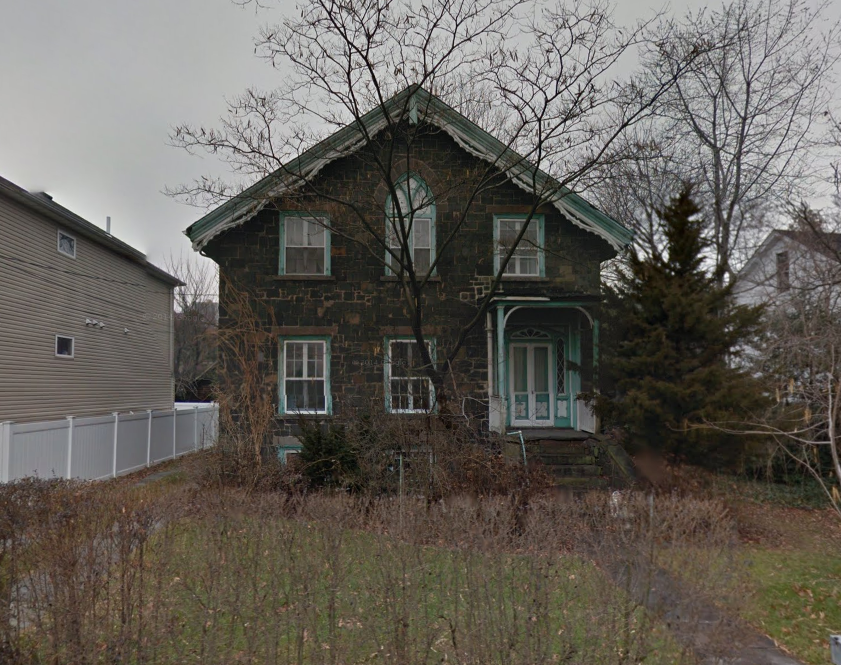
Dr. Samuel MacKenzie Elliott, 69 Delafield Pl.
Dr. Elliot’s house in West Brighton, Staten Island, was landmarked in 1967 as “an excellent example of country Gothic Revival architecture” but it was the builder and occupant of the home that is of greater interest than its architectural pedigree. Dr. Elliott was born in Scotland and was one of this country’s first oculists—19th century speak for eye doctor. He set up an office in Manhattan and one on Staten Island where he treated some very prominent patients including John Jacob Astor, Peter Cooper, Henry Wadsworth Longfellow and Horace Greeley.
Dr. Elliott was an ardent abolitionist and according to the LPC report “he reputedly harbored many slaves in his cellar, which was set up with a special fireplace for cooking." He was an early real estate investor who built 22 homes that looked much like his own and were sometimes used to house his patients while they underwent treatment.
One of these properties was home to Elizabeth Neall, an important player in the women’s abolitionist movement, who was married to Sydney Howard Gay, editor of the "Anti-Slavery Standard who “left behind his substantial Record of Fugitives which attests to his undertakings as an active agent for the Underground Railroad."
You Might Also Like

















